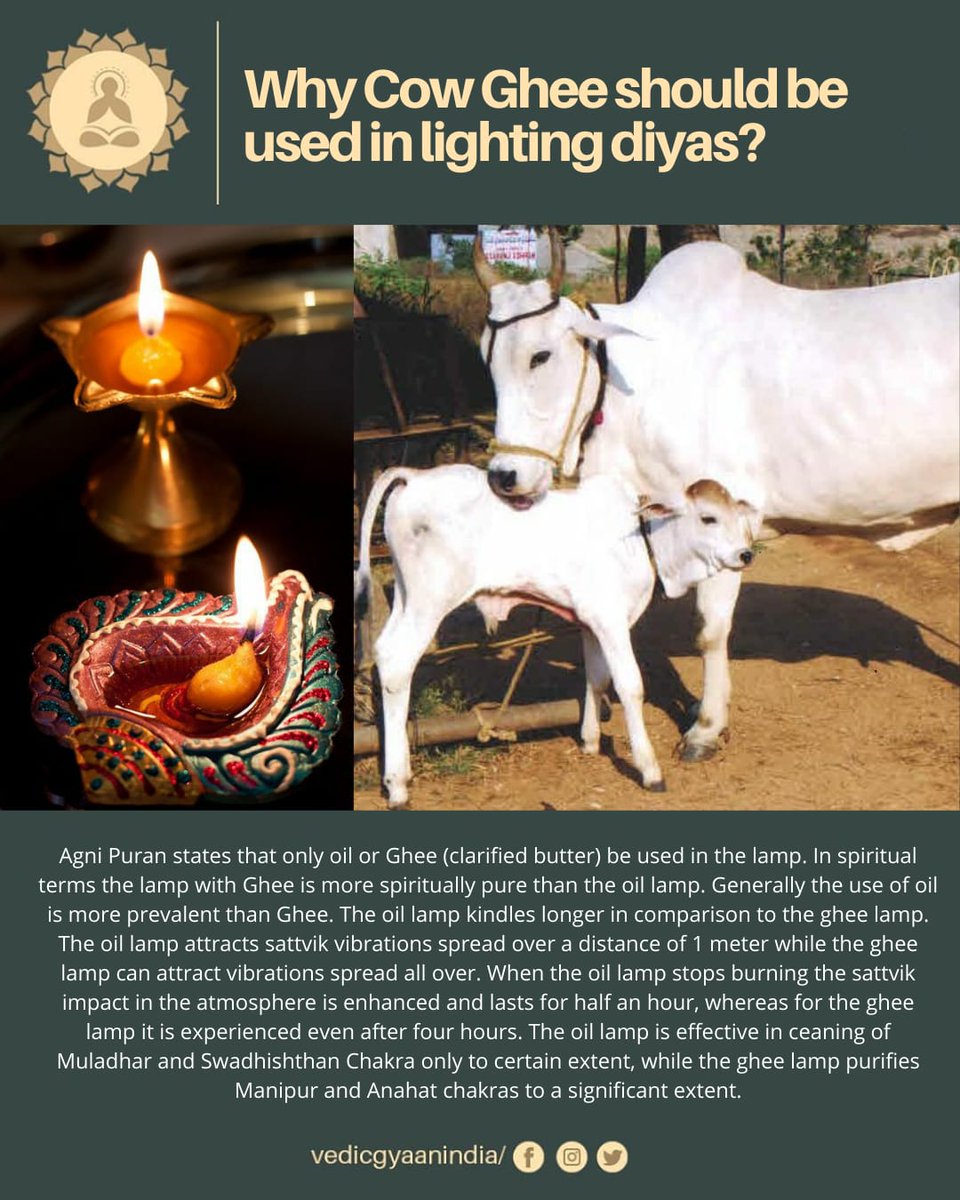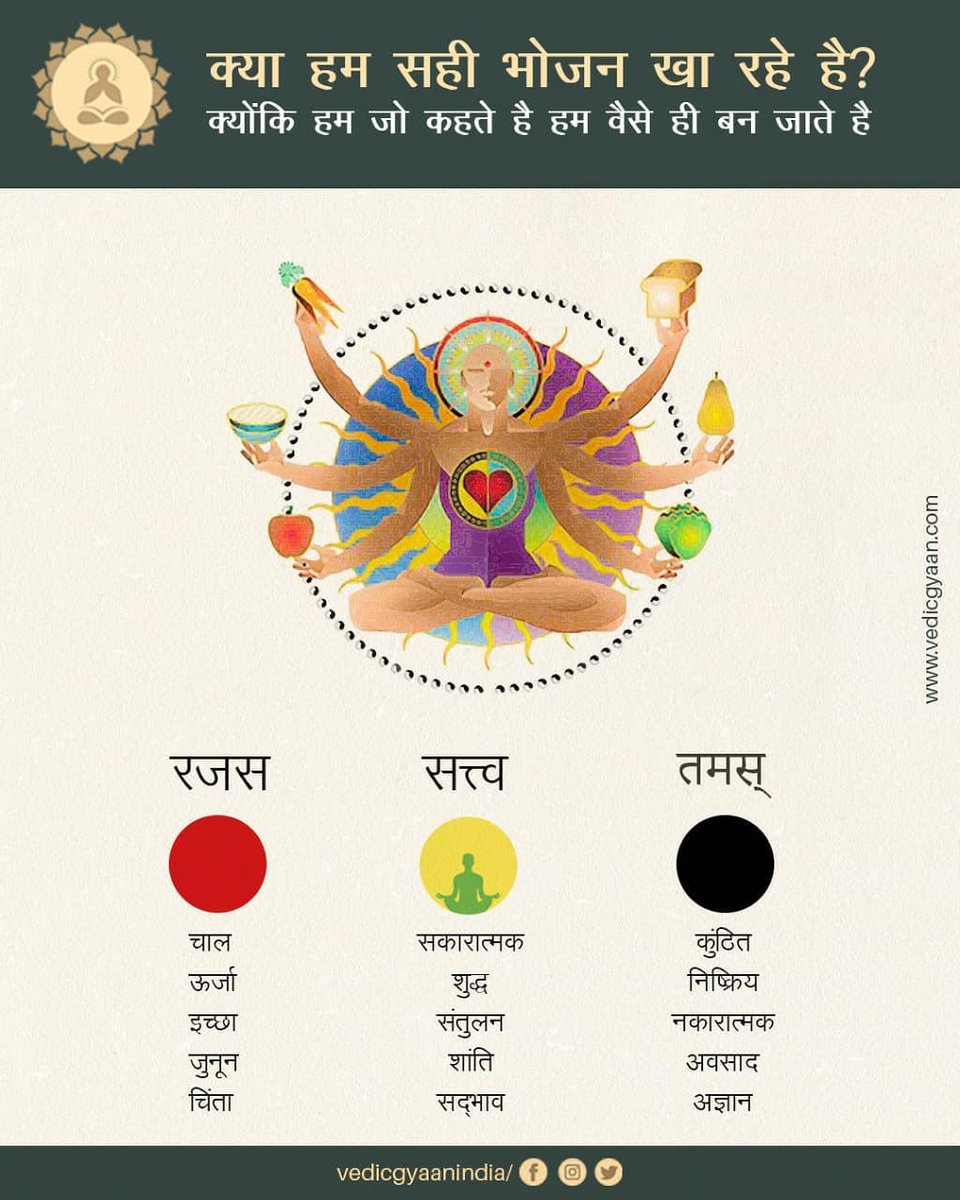
Agni Puran states that only oil or Ghee (clarified butter) be used in the lamp. In spiritual terms the lamp with Ghee is more spiritually pure than the oil lamp. Generally the use of oil is more prevalent than Ghee. The oil lamp kindles longer in comparison to the ghee lamp. 

The oil lamp attracts sattvik vibrations spread over a distance of 1 meter while the ghee lamp can attract vibrations spread all over. When the oil lamp stops burning the sattvik impact in the atmosphere is enhanced and lasts for half an hour, whereas for the ghee lamp it is
experienced even after four hours. The oil lamp is effective in ceaning of Muladhar and Swadhishthan Chakra only to certain extent, while the ghee lamp purifies Manipur and Anahat chakras to a significant extent.
Read more on: vedicgyaan.com
• • •
Missing some Tweet in this thread? You can try to
force a refresh











